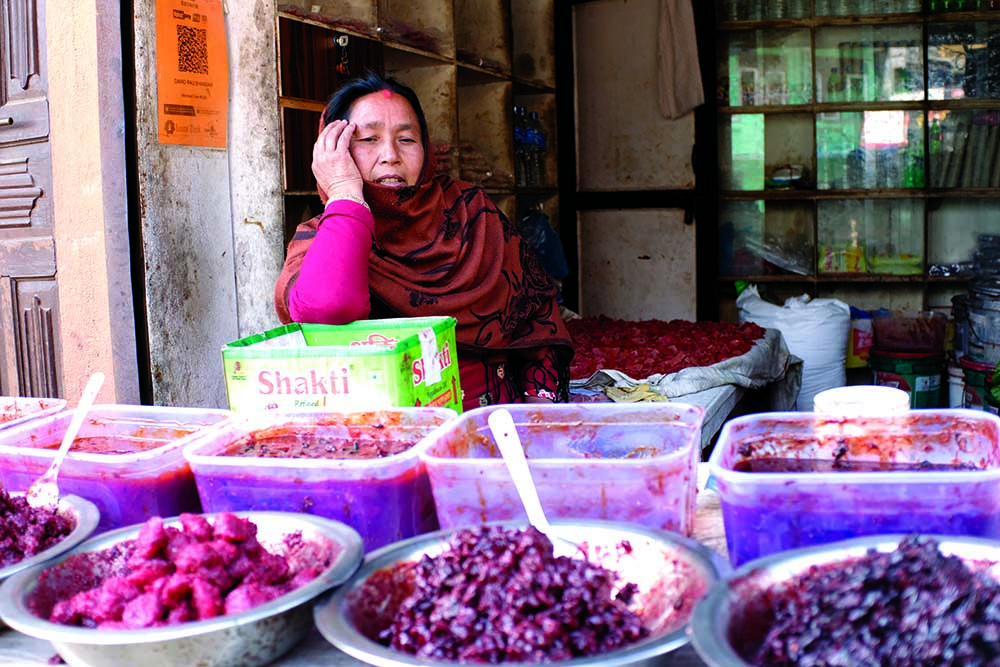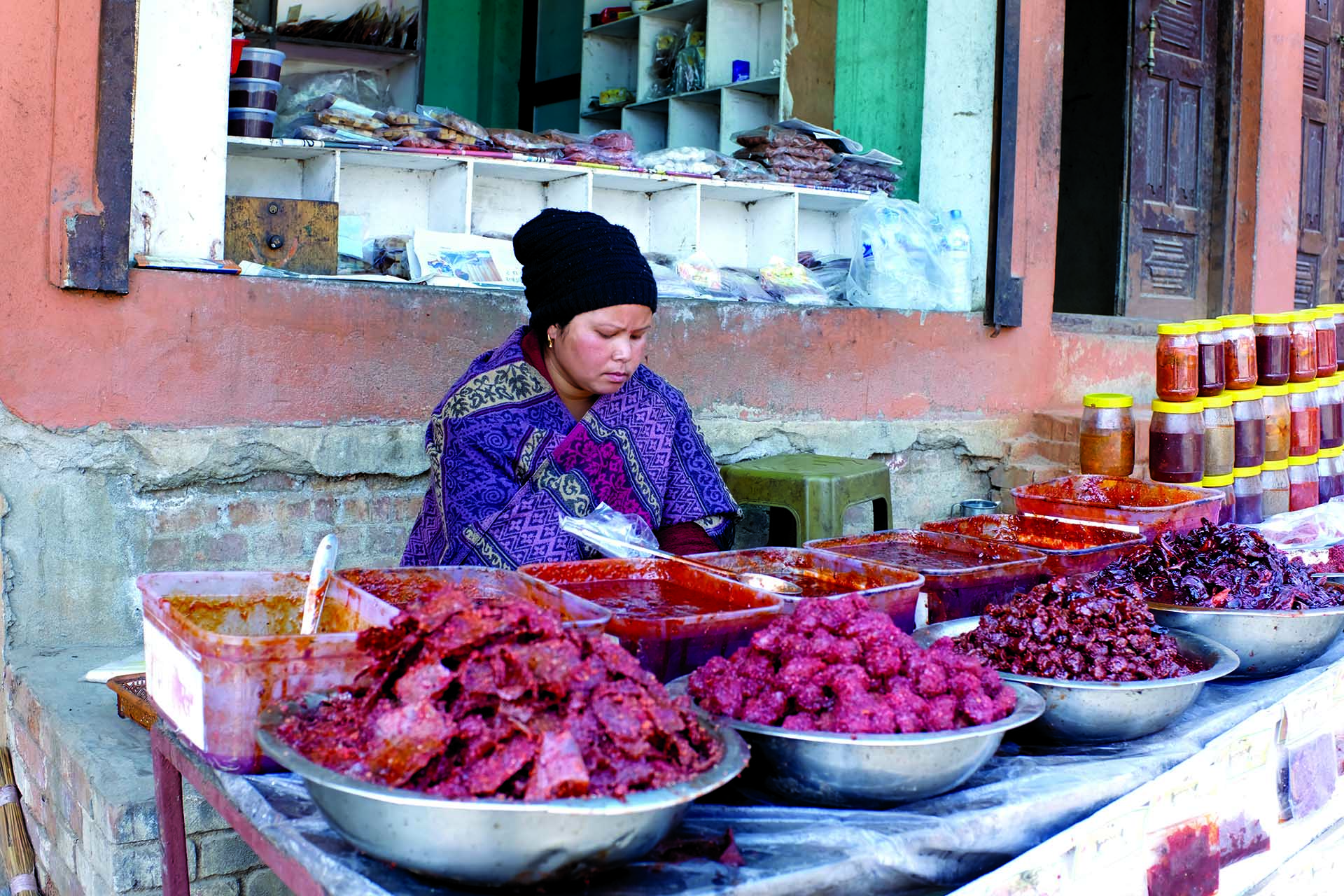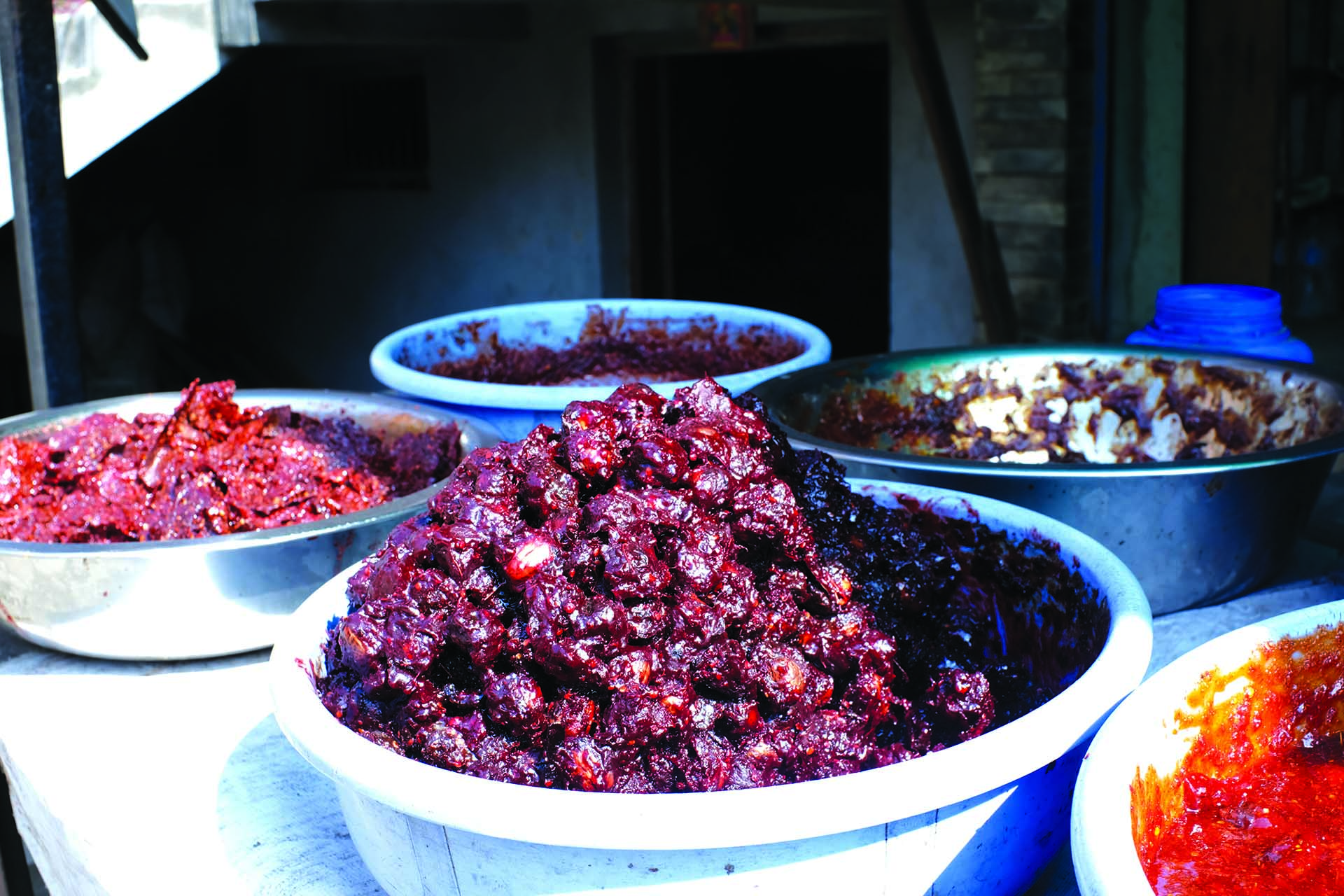I always carry a packet of titaura in my bag. Whenever my mood is off, I open the packet, take one out, and put it in my mouth,” says Rakina Maharjan, 15. “It makes me feel oh-so-good.”APEX had met Maharjan at Sanga, a scenic picnic spot on the outskirts of the valley, on a Saturday. Sanga is famous for a big standing statue of Lord Shiva—and for its many titaura factories and shops.
“I was around 9 or 10 when I first tasted titaura. From that day, I have loved its sour and sweet taste,” says another visitor Anish Sindukar, from Patan. “Now I am 23 and I am still hooked to it.”
A mouth-watering mix of tangy, sweet, sour, salty and hot, titaura or paun is made from lapsi (hog plum fruit). The process is simple: boil lapsi in salt water, take out the seed stones, and mix the gluey flesh with hing and other typical Nepali spices. Add some salt and sugar, and the ingredients of the typical Nepali delicacy is complete. Then you roll it, sun-dry it and cut it into slices. Alternately, you could make candies or a pickle-like mixture—and the titaura is ready to savor. Apart from the traditional lapsi, Nepali entrepreneurs have started making titaura with mango, lemon, and dates as well. Damo Paun Udyog of Sanga is one such venture. Firm owner Sanu Maya Shrestha has been in this business for over 25 years. Initially, she made and sold titaura to dif-ferent shops in the valley. She now has her own wholesale store. “I make a good living from it,” she says. A few steps from her factory is Kumari Paun Udyog, which has been producing lapsi “mada” for the past 30 years. “I consider myself a self-taught and successful entrepreneur,” says factory owner Mohan Kumar Shrestha. If not for his factory Shrestha reckons he would now be toiling somewhere in the Gulf













